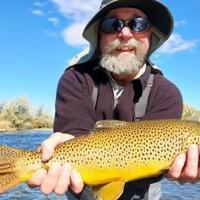“With lower flows greater concentrations of some of the monitored parameters were expected,” wrote Kendall Ard, a Rocky Mountain College student who served as a water quality monitoring intern.
Higher nitrogen concentrations will feed algae growth that leads to lower water clarity, Ard noted.
Pelicans: Because the large white birds are known for a hefty fish appetite, pelicans are often blamed for reducing young trout populations. Larissa Saarel, an undergraduate senior at Rocky Mountain College, conducted a survey of scientific literature regarding pelicans and found the big birds are getting a bad rap when it comes to trout.
“Cormorants, gulls and mergansers have been documented consuming more salmonids (often juvenile age classes) than pelicans,” she wrote. “In general, trout are not a primary prey item due to their use of water that is deeper (greater than 3 feet) than pelicans regularly forage.”
Pelicans on the Bighorn are also more likely to be non-breeding birds, which have lower consumption rates than adults feeding chicks, Saarel found. In Montana, breeding pelican populations have been documented at Medicine Lake in far Eastern Montana.
Redd mapping: In another experiment using new technology, outfitter Dennis Fischer flew a drone to see if they could be used to map trout spawning redds. In collaboration with Tony Thatcher, of DTM Consulting in Bozeman who crunched the data, the duo mapped more than 27,000 square feet of possible redds at nine known spawning sites.
Credit: Source link






























